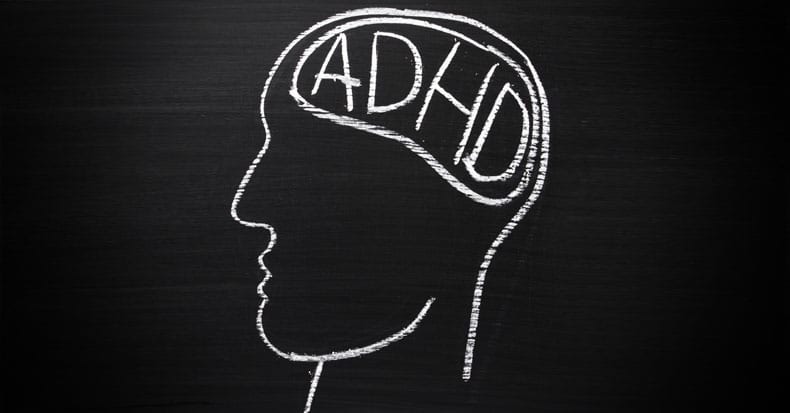Traditionally, chiropractic care is associated with treating back and neck pain, as well as other orthopedic conditions involving the arms and legs. However, there is a growing amount of research that chiropractic care can also help many non-musculoskeletal conditions. What, if any, benefits does chiropractic offer for patients with attention-deficit/hyperactivity disorder (ADHD)? Let’s take a look!
ADHD is characterized by hyperactivity, inattentiveness, and impulsivity, as well as behavioral, social, and/or emotional difficulties. Experts estimate that ADHD affects somewhere between 2.6% to 11.4% of the population. The American Academy of Pediatrics’ Committee of Quality Improvement, Subcommittee reported the standard of care for best results should be a combination of BOTH behavioral modification and pharmacotherapy, as neither one alone was as effective as the two together to help ADHD. There has been growing concern regarding the safety of both the short- and long-term use of psychotropic medications, and because of this many parents and children seek alternative approaches. In one study, a group of 157 children ages 6 to 13 years (86 boys, 71 girls)—with difficulties in reading, learning, social interaction, and school performance from conditions that included dyspraxia, dyslexia, ADHD, and learning disabilities—received a course of chiropractic treatment. The outcome measure used a series of eight standardized psychometric tests that evaluated 20 separate areas of cognitive function, patient- or parent-reported improvements in school performance, social interaction, and sporting activities. These tests were administered by a certified speech therapist before and after treatment. After treatment, investigators reported improvement in all areas measured, including the children’s ability to concentrate, maintain focus and attention, and control impulsivity, in addition to better performance both at home and at school. Another study looked back at four cases of male children ages 9-13 who received chiropractic treatment, of which three of the four cases had a history of medication use and two had been prescribed medication by their physician at the start of chiropractic care. The chiropractic care consisted of spinal manipulative therapy augmented by nutritional supplementation, and benefits were tracked by using the 15-item parent/teacher ADHD questionnaire and the Friedman test to compare observations repeated on the same subjects. Researchers found improvement in ADHD symptoms (i.e., hyperactivity, impulsivity, and inattentiveness, as well as behavioral, social, or emotional difficulties) with additional research recommended for a larger study.
In a case study, a five-year-old boy previously diagnosed with ADHD received spinal manipulative therapy, soft tissue therapy, and stretching (home and office-based) over the course of twelve weeks (initially three times a week followed by two times a week), and was followed for one year. Researchers reported a decrease in episodes of acting out, an improved ability to follow instructions, and better overall performance both at home and at school. Another study reported benefits using chiropractic management and a brain-based model of care for a 15-year-old male with migraine headaches and a ten-year history of learning and behavioral difficulties that included ADHD, obsessive-compulsive disorder, and Tourette syndrome. His care included spinal manipulation and home physical coordination activities on the opposite side of the involved basal ganglia and same side of the involved cerebellum along with interactive metronome training. Benefits were tracked using neurological soft signs, Conners’ Parent Rating Scale, the California Achievement Test, grade point average, and medication reduction. The patient reported quantitative improvements in tics, attention, reading, vision, health, relationships with his peers and his family, and self-esteem. Because the patient responded well, the author of this case study recommends further investigation using this brain-based model of care plus spinal manipulation. CONCLUSION: CONSIDER INCLUDING CHIROPRACTIC as part of the team!!!
Thousands of Doctors of Chiropractic across the United States and Canada have taken "The ChiroTrust Pledge":
“To the best of my ability, I agree to
provide my patients convenient, affordable,
and mainstream Chiropractic care.
I will not use unnecessary long-term
treatment plans and/or therapies.”
To locate a Doctor of Chiropractic who has taken The ChiroTrust Pledge, google "The ChiroTrust Pledge" and the name of a town in quotes.
(example: "ChiroTrust Pledge" "Olympia, WA")
Content Courtesy of Chiro-Trust.org. All Rights Reserved.

